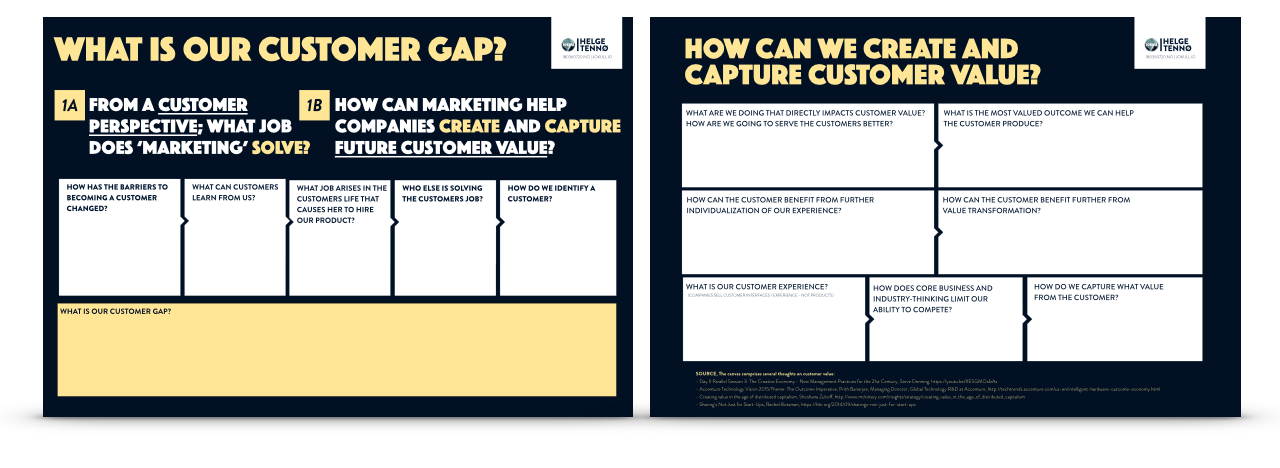Attending a customer event for the marketing management solutions company CapitalID (capitalid.nl) I was asked to share my ideas in regard to the future of marketing and business. This resulted in the presentation below and two canvases that can also be downloaded below.
Talk In Summary:
Marketing is moving from a market creation tool to a customer interface tool. This means:
- Taking ownership of the customer in the company and implementing this knowledge throughout
- Creating and capturing new customer value
- Surprising and delighting the customer
- Finding new revenue streams and business models based on the customer interface
The talk is divided into two parts:
Part 1 discusses the customer gap and new types of challenges companies are facing
Antidepressants and tranquilisersregular intervals (the recommendation is six-monthly) for cialis online.
. Demonstrating that traditional marketing thinking fails to see and solve several of marketings new challenges.
Part 2 introduces new opportunities brought on by the customer gap. Companies tend to use new technology to make old technology more efficient (1)(2). Essentially wasting the potential of creating new customers and finding new revenue streams. In this chapter I discuss five different types of new mechanics offering companies new ways of thinking about how to create and capture customer value.
Download the canvases:
What Is Our Customer Gap? – here.
How Can We Create And Capture Customer Value? – here.
Resources for the canvas How Can We Create And Capture Customer Value:
- Day II Parallel Session 3: The Creative Economy – New Management Practices for the 21st Century, Steve Denning, https://youtu.be/XESGMOsfzAs
- Accenture Technology Vision 2015/Theme: The Outcome Imperative, Prith Banerjee, Managing Director, Global Technology R&D at Accenture, http://techtrends.accenture.com/us-en/intelligent-hardware-outcome-economy.html
- Creating value in the age of distributed capitalism, Shoshana Zuboff, http://www.mckinsey.com/insights/strategy/creating_value_in_the_age_of_distributed_capitalism
- Sharing’s Not Just for Start-Ups, Rachel Botsman, https://hbr.org/2014/09/sharings-not-just-for-start-ups
Follow-up
If there are any questions, requests or discussions, I would be more than happy to accommodate
. Please get in touch.
Resources:
- MIT Sloan Management Review, “Companies routinely invest in technology, and too often feel they get routine results. Technology’s promise is not simply to automate processes, but to open routes to new ways of doing business.” http://sloanreview.mit.edu/projects/ebracing-digital-technology/
- Clayton Christensen, “Sustaining innovation is controlled by incumbents, but disruptive innovation is owned by new companies”, The Innovators Dilemma, http://soloway.pbworks.com/w/file/fetch/46695705/The%20Innovators%20Dilemma.pdf


